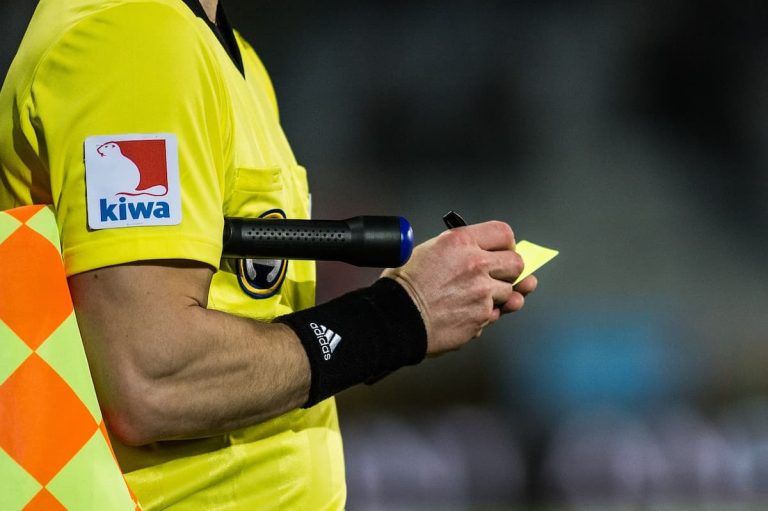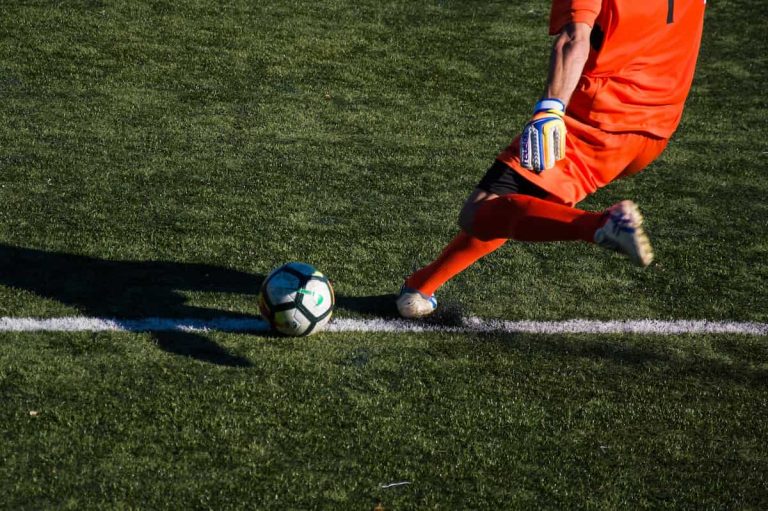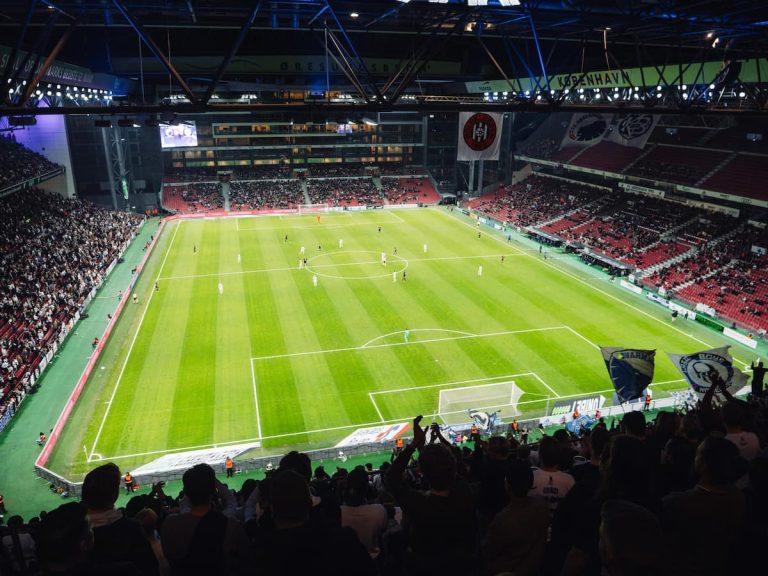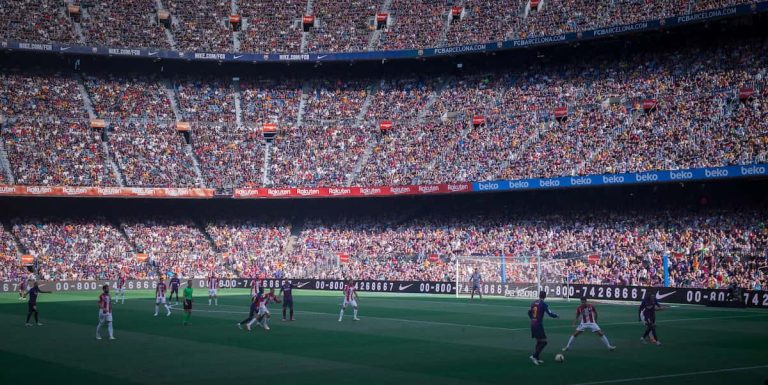How Far Do Footballers Run?
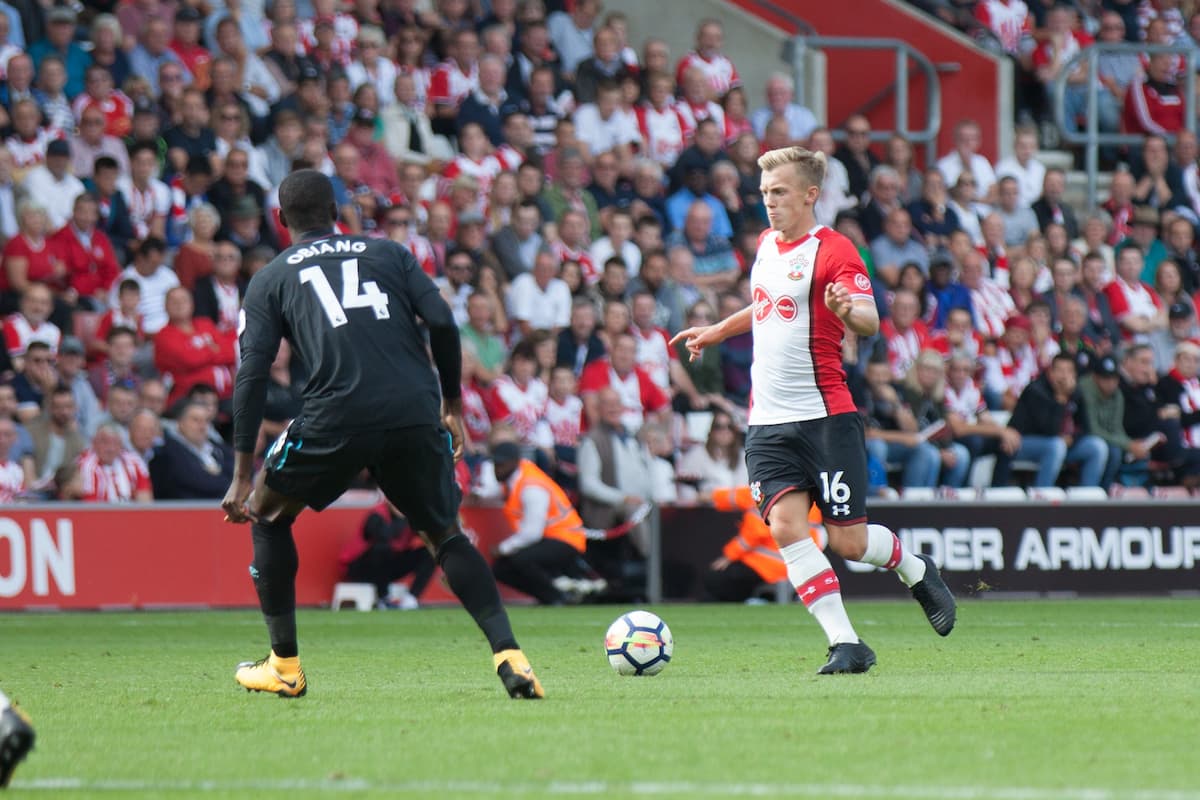
Solent Creatives, Attribution 2.0 Generic (CC BY 2.0), via Flickr
Football is a high-intensity sport that requires 22 players to run for 90-minutes and sometimes more, but how far do footballers run exactly? In this detailed Elastico article, we’re going to break down this topic in full, including the difference between distances covered by position, and how distances are measured in football.
If you want to learn more about this topic, read on to find out more.
Table of Contents
How Far Do Footballers Run?
On average, footballers will run anywhere between 8 and 13 km during a 90-minute football match, with centre-backs being at the lower end of the spectrum and central midfielders being at the higher end.
Differences in Distance Covered by Position
You might be wondering what the difference in distance covered is when looking at different positions on a football pitch. When analysing this information, we’re going to refer to CIES Football Observatory’s October 2021 study.
This study used “data from 7,855 matches played during the 2020 or 2020/21 seasons in 31 leagues from both Europe and America” to analyse the distances covered in professional football matches. Here are some of the biggest competitions included in the analysis:
- English Premier League
- La Liga
- Bundesliga
- Serie A
- Ligue 1
- Champions League
- Europa League
| Position | Average Distance Covered (metres) |
| Centre-back | 9,222 |
| Full-back | 9,888 |
| Midfielder | 10,611 |
| Winger | 10,253 |
| Forward | 9,945 |
Distance Covered by Defenders During a Match
When looking at the distance covered by defenders during a match, it’s worth considering the difference between the demands of playing as a centre-back and a full-back. In the modern game, full-backs are required to move into lots of different areas on the pitch, whether that be up and down each flank or into central midfield if they are asked to invert.
Distance Covered by Centre-Backs During a Match
During the study, they found that on average, a centre-back would cover 9,222 m (9.2 km) per match.
Distance Covered by Full-Backs During a Match
During the study, they found that on average, a full-back would cover 9,888 m (9.9 km) per 90-minute match. This means that on average, full-backs covered an additional 666 m (0.7 km) in comparison to centre-backs. This is reflective of the different demands placed on each position.
Distance Covered by Midfielders During a Match
During the study, they found that on average, midfielders covered a distance of 10,611 m (10.6 km). This is the position that covers the most distance, which makes sense as midfielders, in particular central midfielders, are at the heart of everything during a football match.
The term box-to-box midfielders is given to players that operate in the spaces between both team’s penalty areas, which is a significantly large area. This means that these midfielders are likely to cover a lot of ground, which is reflected in the football data collected.
Distance Covered by Wingers During a Match
During the study, they found that on average, wingers covered a distance of 10,253 m (10.3 km). On average, wingers covered 358 m (0.4 km) less than midfielders. Some fans may assume that wingers would cover more ground than other midfielders because they associate wingers with constantly making runs with the ball during matches.
Other midfielders are likely to cover more ground without the ball than wingers, which will contribute to their overall higher figure.
Distance Covered by Forwards During a Match
During the study, they found that on average, forwards covered a distance of 9,945 m (10.0 km). This means that they cover less ground than both midfielders and wingers, but more than both centre-backs and full-backs.
Depending on the type of team that a forward plays in, they might be required to do lots of pressing high up the pitch to try and regain possession of the ball for their side.
If this is the case, they are likely to cover a lot of ground during 90 minutes of football. On the other hand, forwards that play in teams that prefer to sit in, in a low block, might cover less ground during matches, as they are not required to press the ball as intensely or regularly.
Distance Covered by Goalkeepers During a Match
On average, goalkeepers typically cover a distance of 4 to 5 km during a game, which makes sense as they often have a passive role in most matches.
There are exceptions to this, though, with one example being a Champions League quarter-final match between Atlético Madrid and Barcelona in April 2014. During this match, Barcelona goalkeeper José Manuel Pinto covered an impressive distance of 5.5 km, which was only 1.3 km less than Lionel Messi‘s distance of 6.8 km.
How Technology Measures Distance in Football
So, how is each player’s distance measured during a football match, and can we trust the distances recorded? Well, each player will wear a GPS vest, and this technology allows football clubs to accurately track a player’s running distance throughout a football match.
Not only will coaches use this information to track player’s distances, but they’ll also use it to track player’s locations on the pitch, for example how often a player receives the ball in the final third of the pitch.
Factors Affecting the Distance Covered in Football
Now let’s take a look at the factors affecting the distance covered in football. Each team will cover different cumulative distances and this will be because of a number of factors including – team strategy, fitness and performance and game state.
Team Strategy
The first factor affecting the distance covered in football is each team’s strategy. Some teams will press high up the field to try and regain possession in dangerous areas, and this means that their forwards will cover a larger distance during 90 minutes of football. Good examples of this kind of side are Jürgen Klopp’s Liverpool and Eddie Howe’s Newcastle.
On the other hand, a team that operates in a mid or low block (parking the bus) won’t press high up the pitch, meaning they are more likely to cover a smaller collective distance during a football match.
Both of these examples show the relationship between distance covered and team strategy.
Fitness and Performance
Another key factor affecting the distance covered in football is fitness and performance. If a team is able to run larger distances throughout a football match, they’re likely to have a higher overall fitness level than their opposition. Having higher fitness levels can mean that they are able to put in a stronger performance, in particular, during the later stages of a match.
On the other hand, football players and teams who are tired and “leggy” are more likely to make mistakes due to fatigue, and this will affect their overall performance levels during a game.
Game State
Game state is another key factor that affects the distance covered by footballers in a match. You might be wondering what game state is, well put simply, it’s the state of the game in which both teams are playing in.
Refereeing decisions and defining moments can affect game state in a big way, a prime example of this would be one team receiving a red card before half-time. If this were to happen, the individuals on the team with fewer players would be required to cover more ground individually to make up for the player who has left the pitch.
This works both ways, as the opposition team who has the numerical advantage would most likely cover less ground than they would have done if the match was being played 11 vs 11 for the whole 90 minutes.
Conclusion
How far do footballers run? On average, footballers will cover just under 10 km per 90-minute match, unless they’re a goalkeeper. The amount of distance each player covers is highly dependent on a number of factors including, position, team strategy, fitness and game state.
Although we’ve looked at averages in this article, some players have been known to run up to 16.7 km across 120-minutes, and the players with the highest entries tend to be box-to-box midfielders.
How do we know all of this is true? Well, technology in the form of GPS vests allows teams and coaches to track the physical performance of their players in real-time.
We hope that you enjoyed this Elastico article and learned something new today!
Frequently Asked Questions
What Is the Longest Distance Run By a Footballer?
The record for the longest distance ran by a footballer in a World Cup was 16.7 km. This was over 120-minutes when Croatia played Japan in the 2022 Qatar World Cup Round of 16 knockout match.
How Many Kilometres Does Ronaldo Run in a Game?
Cristiano Ronaldo in his prime would typical run over 9 km during a 90-minute football match. However, as a forward, he wouldn’t cover as much ground as the central midfield players at Manchester United and Real Madrid.
How Many Kilometres Does Messi Run in a Game?
Typically, Lionel Messi would run just short of 8 km during a 90-minute football match. This is less than most other players who play in his position, but it’s common knowledge that Messi covers less ground than other players.
Because he is one of the greatest players to ever play the game, players around him are happy to work hard to win the ball back and give it to the Argentine. From there, he can make the most difference, moving with the ball at his feet.

